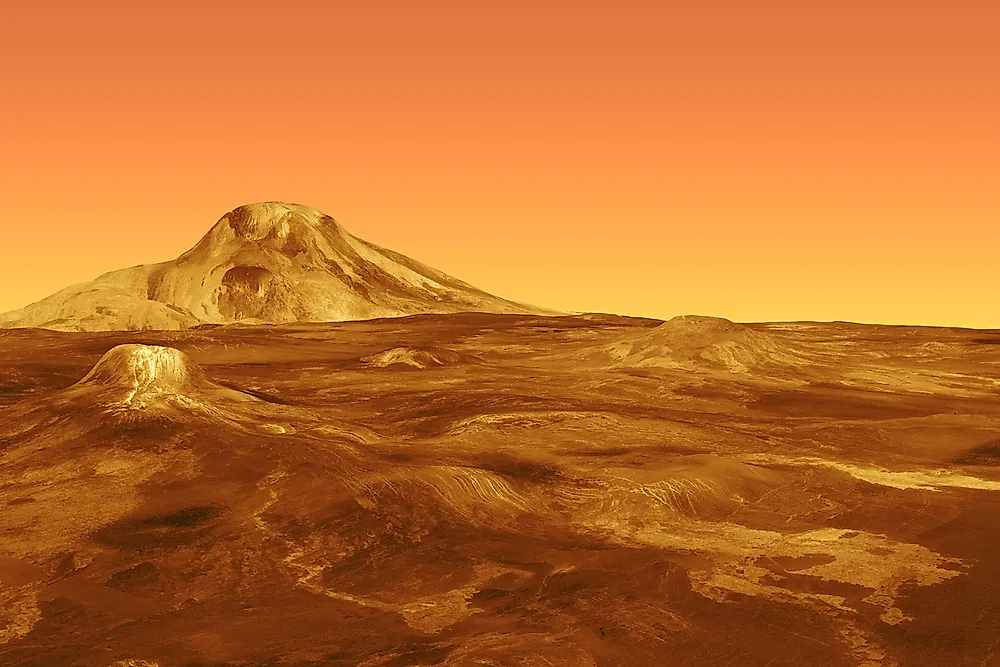Are There Volcanoes On Other Planets?

A volcano is a mountain or hill caused by a rupture in the crust of a planetary object that releases molten lava, volcanic ash, and gases from a magma chamber beneath the surface. There are three major types of volcanoes: active, dormant, and extinct. An active volcano has experienced at least one eruption in the past 10,000 years. A dormant volcano is one that has not erupted in thousands of years, but is likely to experience volcanic activity in the future. Finally, an extinct volcano is one that has not erupted in more than 10,000 years, and is not expected to erupt again in the future because it no longer has a magma supply. Examples of active volcanoes on Earth include Kilauea (US state of Hawaii), Mount Etna (Italy), Peak of the Furnace (Réunion, overseas department and region of France), Stromboli (Italy), Mount Yasur (Vanuatu), and Mount Merapi (Indonesia).
What Is a Planet?
A planet is a celestial body that moves in an elliptical orbit around a star. Earth is part of the Solar System, which is a planetary system that orbits around a common star, the Sun. Including Earth, the Solar System contains eight planets: Mercury, Venus, Earth, Mars, Jupiter, Saturn, Uranus, and Neptune. Pluto was previously classified as a planet in the Solar System, but is now considered a dwarf planet. Most planets in the Solar System have some history of volcanic activity, and some contain active volcanoes, like Earth.
Volcanoes on Other Planets
Like Earth, volcanoes on other planets are categorized as active, dormant, and extinct. Other planetary objects on which volcanic activity has been identified include Venus, Mars, and Io, which is a moon of Jupiter.
Venus
Venus contains numerous and diverse volcanic features. Venus is believed to contain the highest number of volcanoes of any planet in the Solar System, with an estimated number that ranges between 100,000 and 1,000,000. The surface of Venus, which is 90% basalt, is a clear indication that volcanic activity has significantly reshaped the planet's surface, which is evident from the high density of impact craters and widespread lava flows. However, scientists have no proof of recent volcanic activity, with the exception of a radar image that revealed possible activity on the planet’s highest volcano, Maat Mons, in the form of ash flows. The majority of volcanoes on Venus are shield volcanoes, although other types include scalloped margin domes and pancake domes.
Mars
The presence of volcanic activity on Mars was first revealed by NASA's Mariner 9 unmanned space probe mission in 1972. Volcanic features on Mars include lava flows, lava plains, and some of the largest volcanoes in the Solar System. The planet is also known for its shield volcanoes, which release fluid lava, similar to that of Hawaii's Mount Lao.
Io (Moon of Jupiter)
Io is one of the four Galilean moons of Jupiter, and the the fourth-largest moon in the Solar System. The moon was discovered by Italian astronomer Galileo Galilei in 1610 and named after the mythological character Io, who was one of Zeus’ lovers and a priestess of Hera. Scientists have confirmed that Io is volcanically active, capturing images of more than 150 active volcanoes, as well as hot calderas. Based on the number of confirmed volcanoes, it is estimated that the planet contains a total of 400 active volcanoes, making it the most geologically active object in the Solar System. The most active volcano on Io is Prometheus, which releases sulfur dioxide to the surface. The high geological activity on Io is the result of the moon’s extremely high tidal heating. Volcanoes on Io release sulfur and sulfur dioxide that climb as high as 500 kilometers above the surface. Additionally, Io’s volcanic eruptions also contribute to Jupiter’s extensive magnetosphere.
Other Planetary Objects
Scientists believe other planetary objects that may be volcanic include Neptune’s moon, Triton, and Saturn’s moon, Titan. Volcanic active was observed on Triton in 1989 by Voyager 2. This included geyser-like eruptions of dust and nitrogen gas released to the surface in the form of plumes that reached heights of approximately 8 km. Consequently, Triton is listed among the most volcanically active bodies in the Solar System. A study released in 2010 also revealed evidence of ice volcanoes on Saturn’s moon, Titan. Cryovolcanoes, such as those on Titan, release water, ice, and hydrocarbons into the atmosphere instead of the lava released by volcanoes on Earth.











